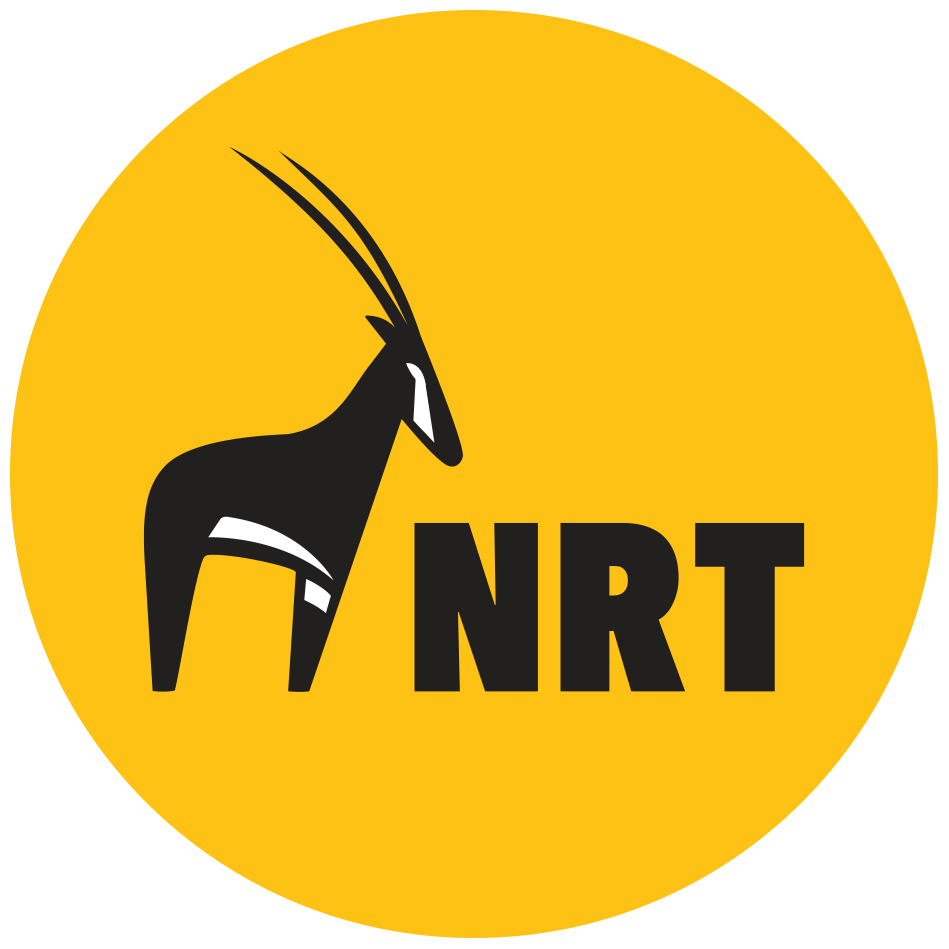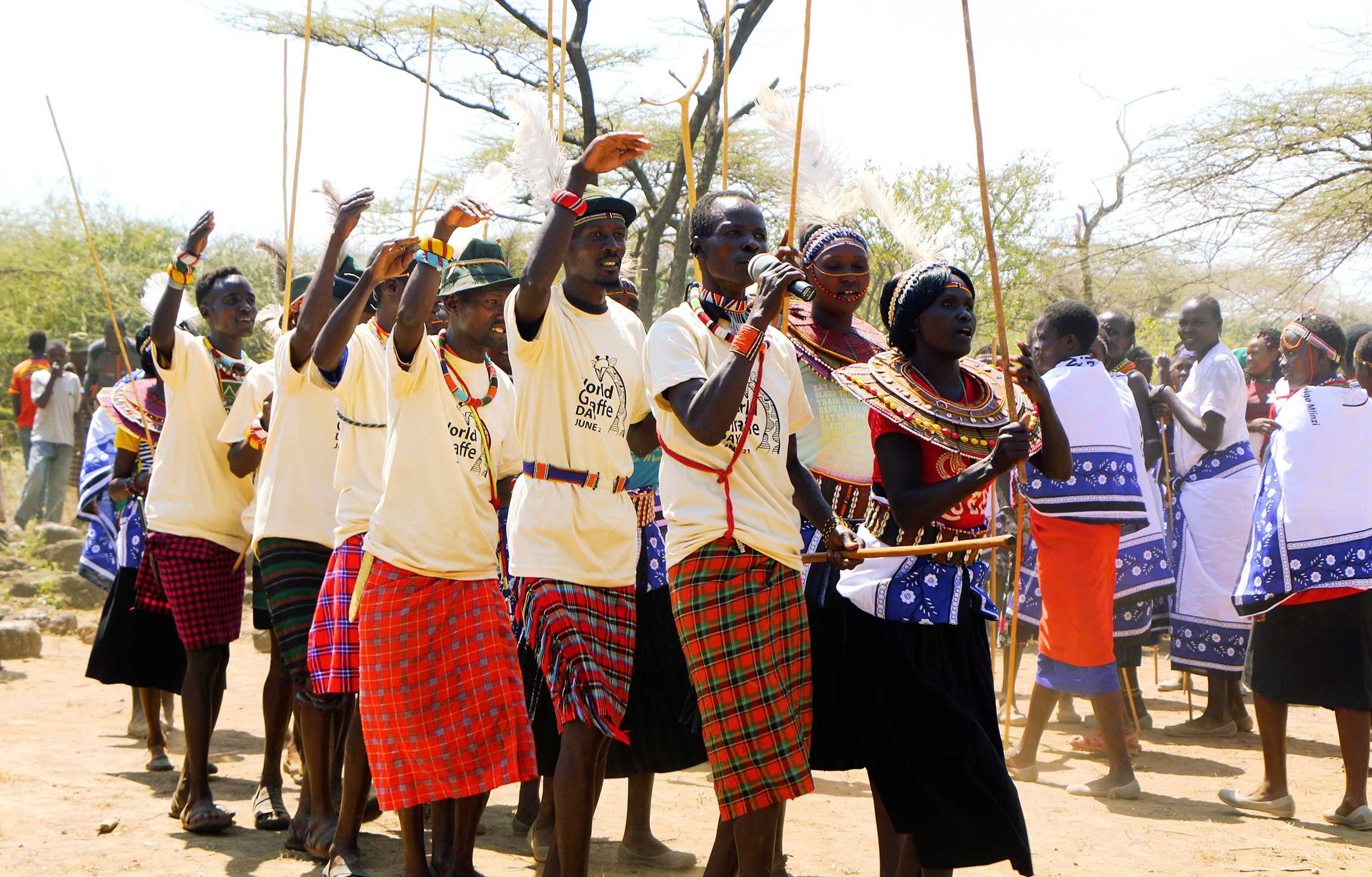2022 World Giraffe Day Celebration
Joy, pomp and dance marked this year’s World Giraffe Day celebration at Ruko Community Conservancy in Baringo County.
The annual event, which honors and raises awareness of the local Rothschild's giraffe population, drew throngs of elated community members to the Conservancy's headquarters on June 21 to commemorate the occasion.
Cultural dancers of all ages, drawn from Ruko Conservancy’s indigenous communities donned their dazzling traditional regalia during the event. They wore multi-coloured beaded jewelry, shell-lined waistbands, beautiful shukas and eye-catching ostrich-feathered headdresses. Their leg bells and musical anklets jingled as their bodies moved gracefully to the rhythm of the songs and dances they performed. Their energy was contagious, and most people—guests included—could not help but join them in their dancing.
“Today, we sang, danced and celebrated with many people, including our brothers and sisters from the Njemps community,” said a cheerful Faith Muge, a small-scale farmer from Komolion area in Ruko Conservancy.
‘Njemps’ is another name for the Il Chamus community. The Njemps and the Pokot are Ruko Conservancy’s native communities.
“Nearly two decades ago, we the Njemps and the Pokot could not see eye to eye, but now, we are united by giraffe conservation,” Faith added.
NRT and NRT’s key partners including the San Diego Zoo Wildlife Alliance (SDZWA), Kenya Wildlife Services (KWS), Kenya Marine and Fisheries Research Institute (KMFRI), and Twiga Walinzi, attended the event.
World Giraffe Day coincides with the summer solstice. It is fitting that on the longest day of the year, the world celebrates the longest-necked animal on the planet.
It was an honor for Ruko Conservancy to host the event. Due to its endemic status, the Rothschild's giraffe, also known as the Baringo giraffe, has been the focus of the Conservancy's conservation efforts for the past ten years.
“I am very impressed by how much Ruko Conservancy, with whom we have been working closely, has advanced in the conservation of the Rothschild's giraffe,” Jeniffer Putunoi, the Deputy Warden for the Kenya Wildlife Service’s Kabarnet Station, said during the event. She thanked all partners for their remarkable contributions over the years and urged prospective ones to come on board.
The International Union for the Conservation of Nature (IUCN) listed the Rothschild’s giraffe, a subspecies of the northern giraffe, as endangered. The Giraffe Conservation Foundation reports that the numbers of these majestic creatures have been declining at an alarming rate over the years, mainly due to habitat loss, fragmentation, degradation, poaching, disease, war, and resource conflict.
The Foundation’s research indicates that the decline rate has been roughly 30% since the 1980s, and only about 117,000 giraffes are roaming the wilds of Africa today. However, community-led conservation initiatives in northern Kenya are significantly remedying this situation.
Eight Rothschild’s giraffes were translocated to Ruko Conservancy in 2012 in a bid to reintroduce the species to the area after they had nearly gone extinct due to years of hunting and conflict. The translocation ushered in a new era for the Conservancy and strengthened ties between the Il Chamus and Pokot, uniting these two communities who historically have been at war with each other. The Conservancy also saw an uptick in tourists visiting, boosting its income.
In December 2020, Ruko Conservancy won the hearts of millions around the world when working with partners, it successfully translocated two female Rothschild’s giraffes from Lake Baringo’s Longicharo Island—which was fast being marooned by water—to a community-run sanctuary on the mainland.
The two giraffes, Asiwa and Pasaka, were each floated across the lake in a specially-built barge dubbed ‘The GiRaft’. The seven giraffes that remained in the Island were likewise translocated to the mainland over the subsequent months. Ruko’s communities have since been caring for the giraffes.
“Ever since we translocated all giraffes to the mainland, we have seen an undeniable change in their health, innate behaviours, foraging and movements and witnessed the growth of their numbers,” James Cheptulel, the Ruko Conservancy Warden elucidates. “There are currently a 12 male giraffes, and a female who will deliver her calf in less than three months,” he adds.
Michael Parkei, a ranger and driver in Ruko, who works under James’ supervision, ecstatically narrates the communities’ involvement in conservation, “We appealed to our communities to join us in protecting and caring for the giraffes. They enthusiastically responded to our request and inspired us to put in even more effort. They have surpassed our expectations.”
The Conservation Coordinator for Twiga Walinzi (Swahili for ‘Giraffe Guards’), Symon Masiaine, acknowledged their partnership with Ruko Conservancy during the World Giraffe Day Celebration event. “We have had an outstanding relationship with the Conservancy, since we started working with them nearly three years ago,” he observed. Twiga Walinzi’s specialist teams conduct research and regularly monitor giraffes on the ground.
“We are especially appreciative of the Conservancy’s Management, as they have been highly supportive of our work,” Masiaine added. In addition to Baringo, Twiga Walinzi operates in Laikipia and Samburu Counties.
Ruko Conservancy locals are very hopeful about the future of conservation in their Conservancy. Wilson Arekow, a community member who resides in Loyeya Village within Ruko strongly believes in the Conservancy’s potential. He explains, “We would be delighted to see the introduction of more wildlife, like the elephant and leopard, as was done with the giraffes in 2012. We would be more than willing to take care of them.”



